Nixon (New) Theatre
956 Liberty Avenue / Pittsburgh, PA 15222
![]()
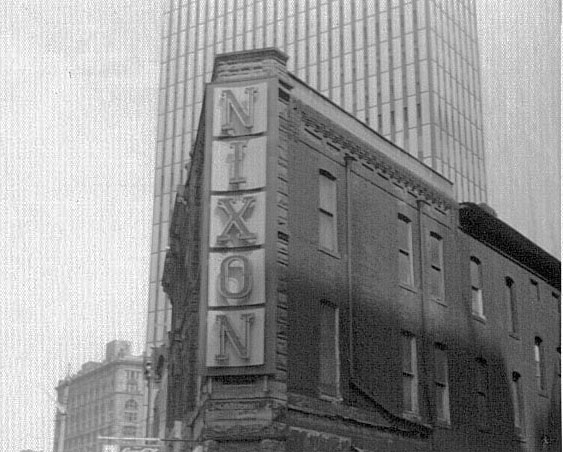
![]()

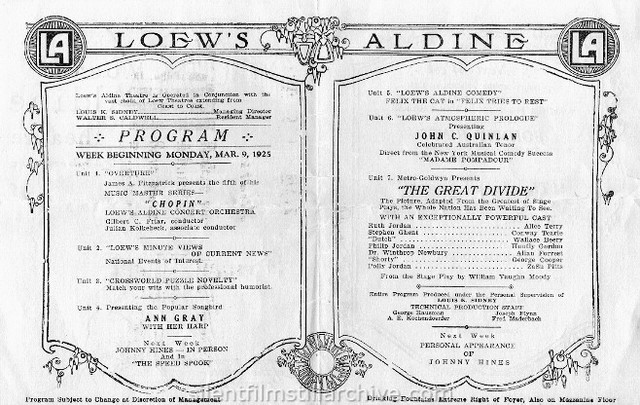
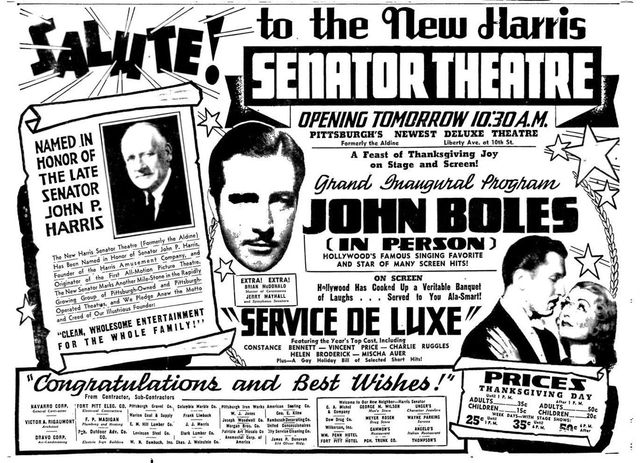
It was the Loew’s Aldine Theatre from September 17, 1923, through 1934. The switch from Shubert to Loew’s strongly suggests a shift from legit to moviehouse. In 1939 it became known
as Loew’s Senator Theatre, but sometime between then and 1950, the John P. Harris circuit purchased the theatre and modified the name to the (Harris) Senator Theatre. It played some
second-run features, generally in double feature programs, but most often the Senator Theatre picked up moveover movies directly after the completion of their first-run engagements
at the nearby John P. Harris Theatre, the flagship of the Harris circuit.
To maintain the continuity/identity of major national touring companies in Pittsburgh, the Harris Senator Theatre changed its name to the (new) 1,760-seat Nixon Theatre in 1950. For the
next quarter of a century, it functioned as the primary legitimate Pittsburgh theatre for touring shows beginning with Oklahoma September 4, 1950.

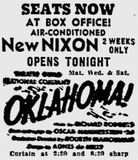
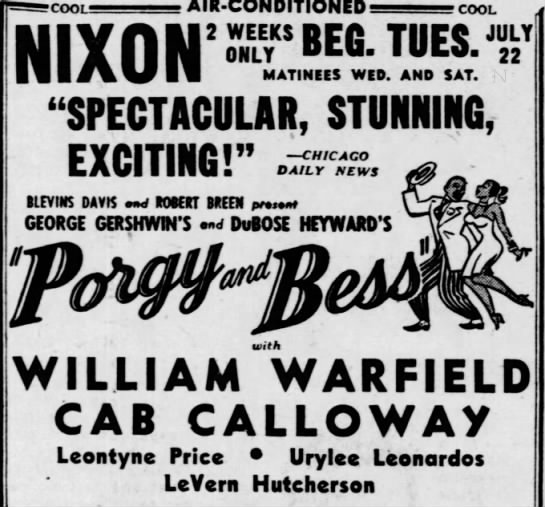
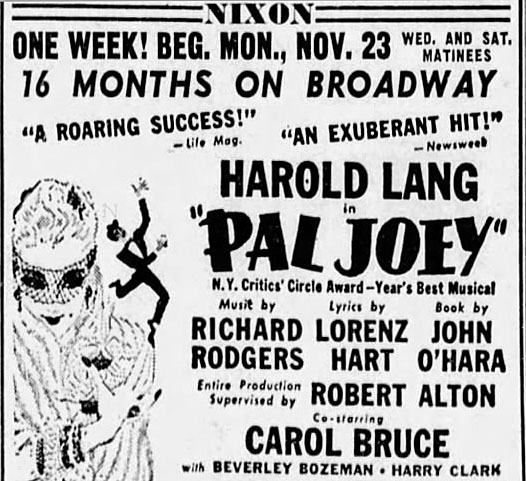
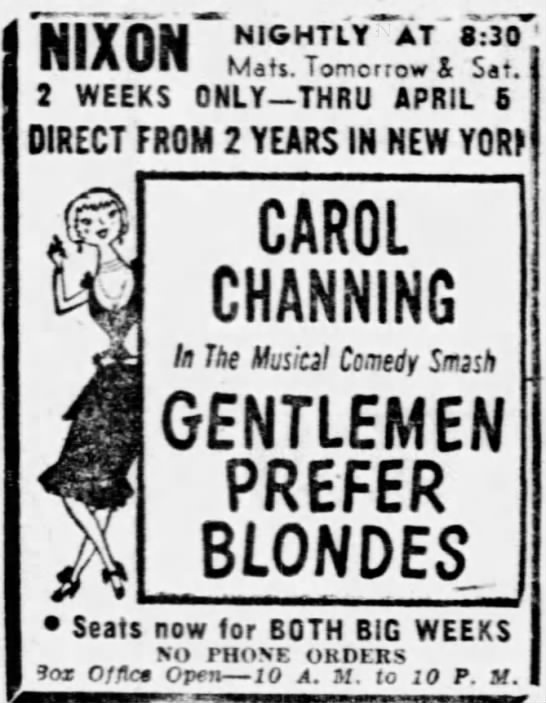
Though an occasional movie slipped in, the Nixon Theatre didn’t begin a recurring policy of roadshow films until Guys and Dolls opened in late-January 1956 and stayed for 10 weeks.
From then onwards, theatre and roadshow movies opened in alternating waves. Lawrence of Arabia had played for just four days of its third week in 1962-3, when the Nixon Theatre
suffered a fire. Lawrence of Arabia moved over to the Fulton Theatre a couple of weeks later to resume a reserved-seat engagement, but the momentum was lost, and it lasted just
seven more weeks.
Stage plays continued to turn up at the Nixon Theatre, but more and more the balance of the theatre’s schedule was given over to movies. The subscription base for plays, so often interrupted for
long streches of movies, eroded over the years. By 1974-75, subscribers had become very wary of an extremely irregular play schedule, with promised productions
being cancelled and name players backing out of tours. Business was terrible. The shows that came in were small and tacky.
The Nixon Theatre was closed in November 1975 and was leveled. It became a surface parking lot. One distinctive feature of the exterior in its later years had been a marquee that stretched
over an alleyway adjacent to the theatre. The original entrance was a tall side of the building level with the auditorium with a simple, but fairly detailed Classic style facade; this was
later replaced with a one-story small entrance with the above mentioned marquee.